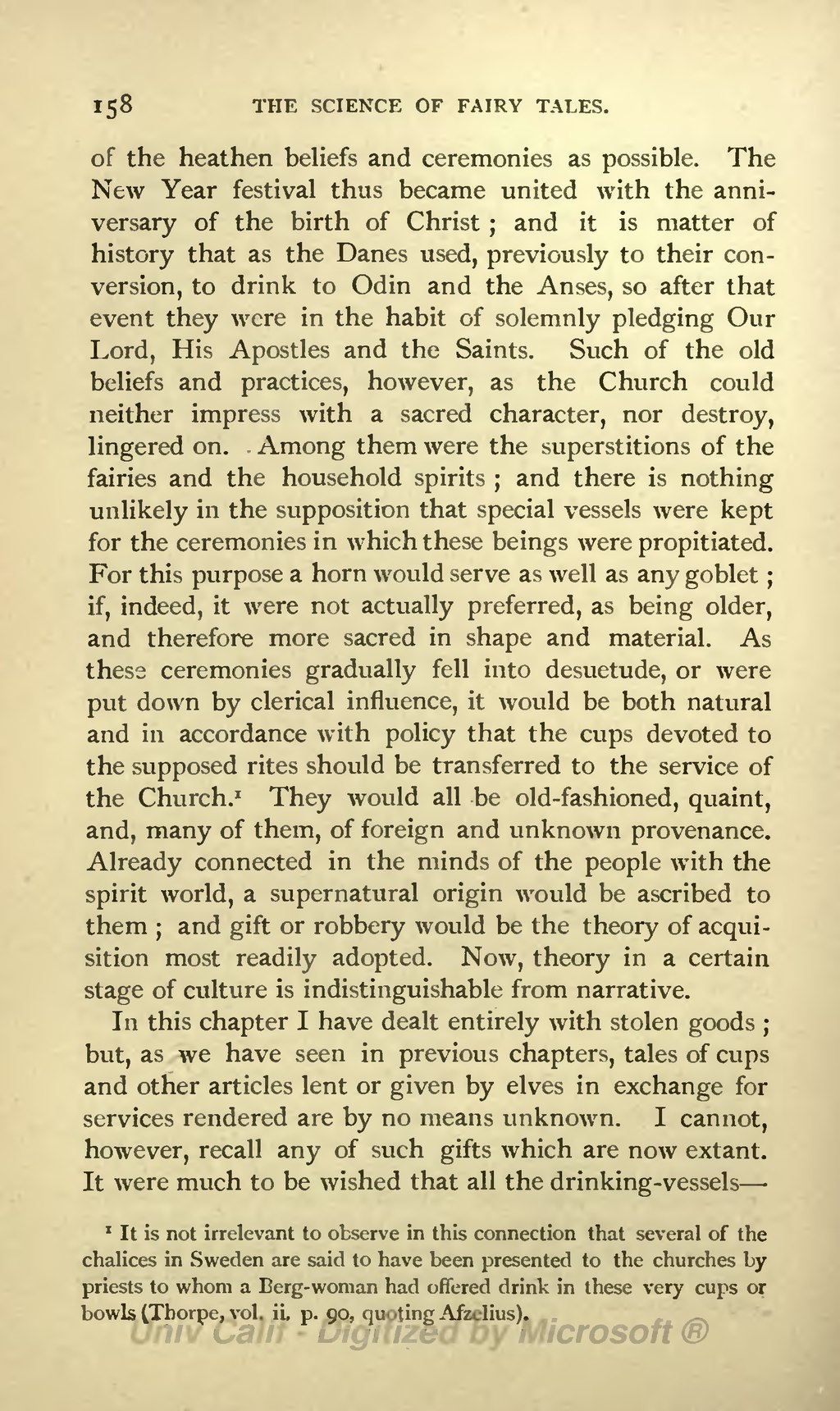of the heathen beliefs and ceremonies as possible. The New Year festival thus became united with the anniversary of the birth of Christ; and it is matter of history that as the Danes used, previously to their conversion, to drink to Odin and the Anses, so after that event they were in the habit of solemnly pledging Our Lord, His Apostles and the Saints. Such of the old beliefs and practices, however, as the Church could neither impress with a sacred character, nor destroy, lingered on. Among them were the superstitions of the fairies and the household spirits; and there is nothing unlikely in the supposition that special vessels were kept for the ceremonies in which these beings were propitiated. For this purpose a horn would serve as well as any goblet; if, indeed, it were not actually preferred, as being older, and therefore more sacred in shape and material. As these ceremonies gradually fell into desuetude, or were put down by clerical influence, it would be both natural and in accordance with policy that the cups devoted to the supposed rites should be transferred to the service of the Church.[1] They would all be old-fashioned, quaint, and, many of them, of foreign and unknown provenance. Already connected in the minds of the people with the spirit world, a supernatural origin would be ascribed to them; and gift or robbery would be the theory of acquisition most readily adopted. Now, theory in a certain stage of culture is indistinguishable from narrative.
In this chapter I have dealt entirely with stolen goods; but, as we have seen in previous chapters, tales of cups and other articles lent or given by elves in exchange for services rendered are by no means unknown. I cannot, however, recall any of such gifts which are now extant. It were much to be wished that all the drinking-vessels—-
- ↑ It is not irrelevant to observe in this connection that several of the chalices in Sweden are said to have been presented to the churches by priests to whom a Berg-woman had offered drink in these very cups or bowls (Thorpe, vol. ii. p. 90, quoting Afzelius).
